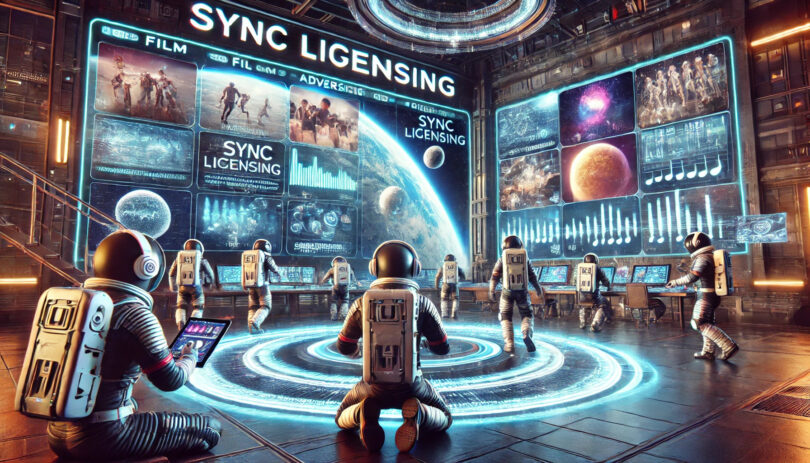Music synchronization, commonly known as “sync,” is a thriving segment of the music industry, presenting myriad opportunities for songwriters and recording artists. This guide delves into the landscape of sync licensing, explaining its primary markets, emerging opportunities, and the mechanics of getting paid. By understanding the dynamics of sync, artists can effectively leverage these opportunities to enhance their careers and income.
Understanding Sync Licensing
Sync licensing involves the use of music in conjunction with visual media. This can range from films and television shows to advertisements and video games. The resurgence of interest in catalog music, such as Kate Bush’s “Running Up That Hill” featured in “Stranger Things,” underscores the significant impact sync can have on an artist’s career. This synchronization propelled the song back onto the charts, exemplifying the power of strategic music placement.
Primary Markets for Music Sync
Film and Television
The largest segment for sync opportunities remains film and television. With the rise of streaming platforms like Netflix, Hulu, and Disney+, the demand for high-quality music to accompany visual narratives has surged. Music supervisors in these industries seek tracks that can enhance the emotional resonance of scenes, driving a constant need for new and classic music alike.
Advertisements
Advertising represents another substantial market for sync licensing. Brands use music to create memorable commercials that resonate with their target audience. While the advertising market can be volatile and influenced by economic conditions, the need for compelling music remains strong.
Gaming
The gaming industry offers a growing market for sync licensing. Video game soundtracks and in-game music play crucial roles in enhancing the player experience. Although detailed figures are scarce, the anecdotal evidence suggests a significant and expanding market.
Emerging Opportunities in Sync Licensing
Social Media and User-Generated Content
Platforms like TikTok have revolutionized the sync landscape with microsync or micro-licensing. These platforms provide new avenues for artists to monetize their music through short, user-generated content that often goes viral.
Podcasts and Audiobooks
The burgeoning popularity of podcasts and audiobooks presents another emerging opportunity for sync licensing. These formats require background music to set the tone and enhance the listener’s experience.
The Metaverse and NFTs
Technological advancements are opening up new sync opportunities in virtual and augmented reality environments, collectively known as the metaverse. Additionally, NFTs (non-fungible tokens) and web3 technologies are creating new revenue streams for music synchronization in these digital realms.
Types of Music Popular for Sync
Music suitable for sync varies widely depending on the context. In advertising, genres like Southern rock and Americana are currently popular, while film and television often seek international and diverse music styles. The demand for catalog music from the 1950s to the 1990s remains robust, providing opportunities for established artists.
How Artists Can Prepare for Sync Opportunities
To maximize sync opportunities, artists should focus on versatility and authenticity in their music. Quality production and songwriting are paramount, as is the ability to write music that supports and enhances visual media without dominating it. Artists should avoid overly specific lyrics and narratives that might limit the use of their music in various contexts.
Payment Structures in Sync Licensing
Publishing and Master Rights
Payment for sync licensing typically involves two main parties: publishing rights holders and master rights holders. Publishing rights pertain to the song’s composition (lyrics and melody), while master rights relate to the recording itself. The distribution of these payments is often based on a 50/50 split, known as Most Favored Nations (MFN).
Upfront Fees and Performance Royalties
Sync licensing deals usually include upfront fees paid by the production company and performance royalties paid by the broadcasting entity. These arrangements can vary depending on the specifics of the licensing agreement and the rights holders involved.
Ensuring Smooth Sync Transactions
Artists must ensure their music is easy to clear for use by pre-clearing rights and having work-for-hire agreements with all contributors. This simplifies the process for music supervisors and increases the likelihood of securing sync deals.
The World Is Full of Sync
The sync market offers vast opportunities for artists to monetize their music and reach new audiences. By understanding the intricacies of sync licensing and preparing their music accordingly, artists can tap into this lucrative segment of the music industry. Staying abreast of emerging trends and technologies will further enhance their ability to capitalize on sync opportunities.








